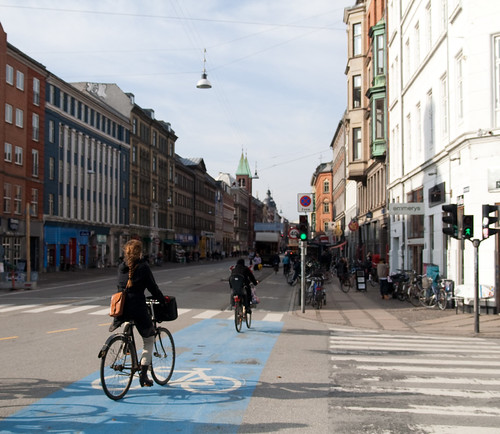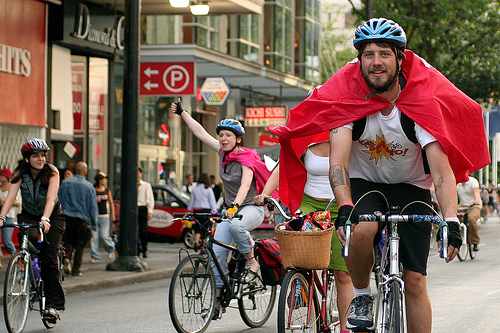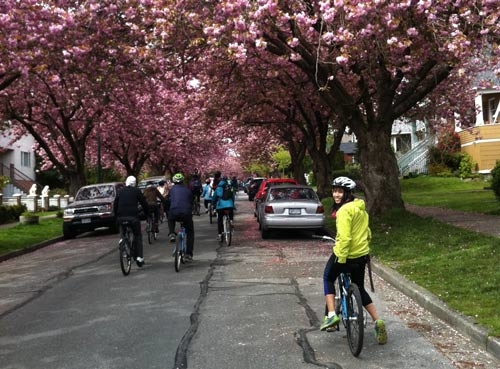Green thinking in cities, Part 2: Copenhagen
 Photo by Fietsberaad via Flickr
Photo by Fietsberaad via FlickrCopenhagen is reknowned for its cycling culture, one which has developed over the last 100 years despite growing affluence and cheap energy. They lead by example with a 36% mode share for cyclists — in other words, 1 in 3 people choose a bicycle for their commute and other everyday activities, despite the long, cold winter. In contrast, the peak areas of Vancouver achieve only 10% mode share. After seeing bicycle use double in 15 years, the city also plans to increase that modeshare to 40% by 2012 and 50% by 2015. Holy smokes.
A combination of cycle paths and greenways offer Copenhagen’s cyclists a growing 400 km network. Some routes use a “green wave” concept that optimizes travel for cyclists moving at 20 km/h to consistently meet green traffic lights. Blue-painted pavement is used for visbility in intersections, a step past the common bike box used in cities like Vancouver. Bikes can also be brought on the S-train commuter network or you can choose to bikeshare.
 Photo by illustir via Flickr
Photo by illustir via FlickrCopenhagen’s high mode share and separated bike infrastructure ensure low accident rates, in part through “safety in numbers.” Helmets are rendered unnecessary by the quality of their infrastructure. The city’s consistent push for safer intersections, more routes and more bike parking mean it’ll take some effort for other cities to catch up, but the model of sustainable, safe and pleasant transportation exists — and in Copenhagen, it is the norm.
Of course, I can’t mention Copenhagen and cycling without also including the word “stylish.”
One lecturer featured at an SFU City Program event said the easiest way to get or stay fit is to live in a walkable or cyclable community. There is a clear link between obesity and walking/cycling transportation, and equally as much between obesity and a car commute. He said we need to change our attitude about cycling and walking being leftovers to being key components. More cycling and walking equals far fewer deaths, from accidents as well as obesity, pollution and so forth. Not surprisingly, it’s a Dane, Jan Gehl, taking his ideas to places like New York City to redesign transportation. (More on that later.)
And finally, via GOOD (as usual), a film:
 This daily green blog challenge is in celebration of David Suzuki’s 75th birthday, supporting the David Suzuki Foundation. Please help me out by sponsoring me online now.
This daily green blog challenge is in celebration of David Suzuki’s 75th birthday, supporting the David Suzuki Foundation. Please help me out by sponsoring me online now.
Note: I am writing solely on my own behalf, and do not claim to represent the David Suzuki Foundation or its views here.


